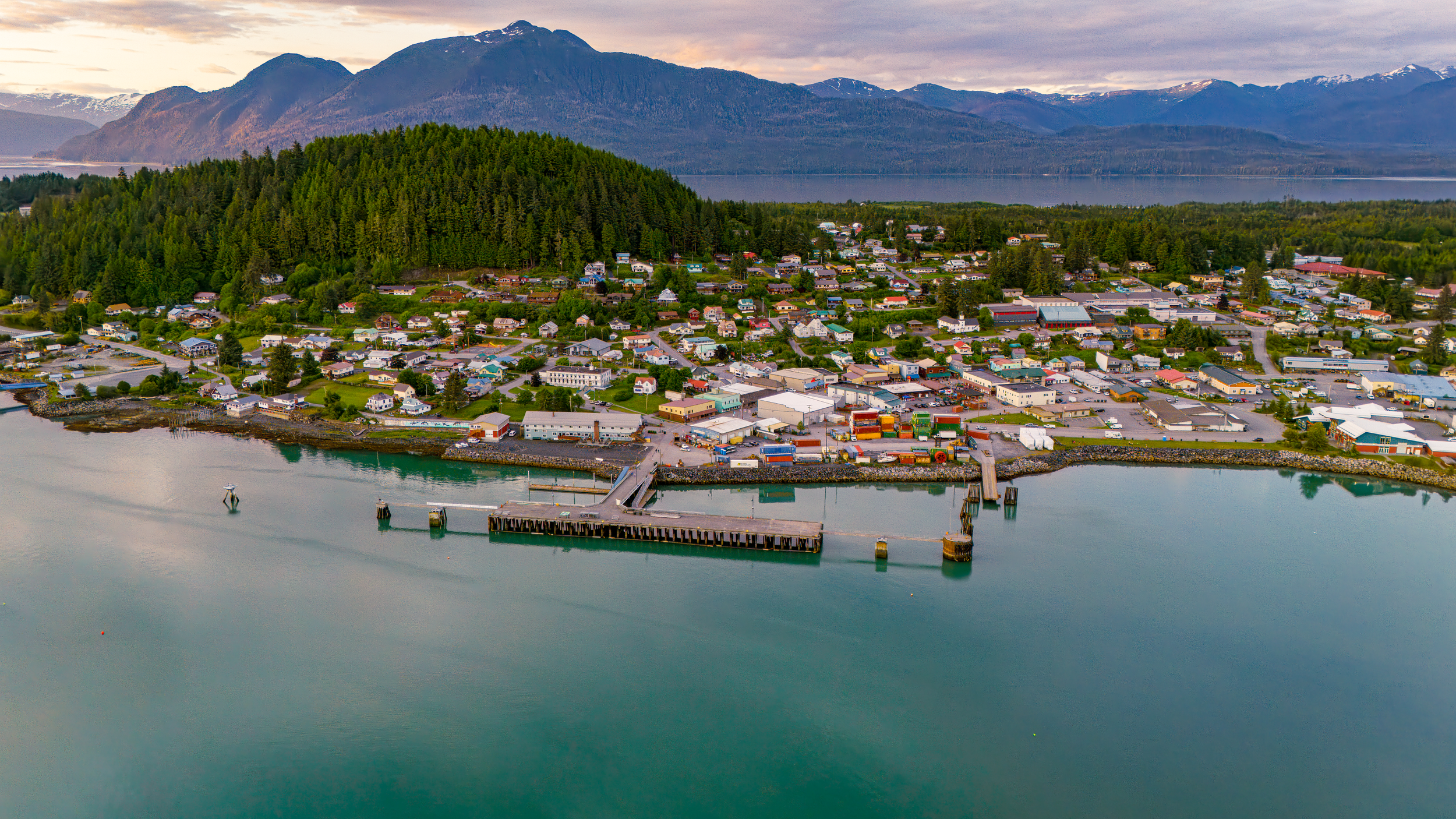DISCOVER WHAT LIES OUTSIDE THE LINES
Aerial view of North Wrangell in mid summer.
Wrangell, one of the most historic communities in Alaska, is the only town in the state to have been ruled by four nations: Tlingit, Russia, the United Kingdom and the United States.
It has the reputation for being the “friendliest little town in Southeast Alaska.”
It’s also one of the hardest-working towns in the state.
The maritime industry is Wrangell’s largest economic driver, which includes commercial fishing. The Marine Service Center is a thriving boat works facility for commercial and recreational vessels. Its boat lifts provide haul-out capabilities and skilled workers provide quality services known throughout Southeast Alaska.
The second-largest private-sector industry in the town of about 2,000 people is tourism, which is gaining in strength as more people discover the region’s attractions and smaller, higher-end cruise ships add Wrangell to their itineraries.
About 30,000 visitors are expected in town in 2024 by boat and airplane.
Wrangell’s $30 million medical center, owned and operated by the SouthEast Alaska Regional Health Consortium, opened in 2021 and is a leading employer and active in promoting a healthy community.
The borough government – similar to a county in the rest of the country – provides electrical, water, sewage and trash services. Power comes from a hydroelectric station across the channel on the mainland.
Located in the middle of the Tongass National Forest, Wrangell has a mild climate with temperatures infrequently dipping into a hard freeze in the winter. Rain is more common than snow, and summer temperatures range anywhere from the mid-50s to the mid-70s.
Wrangell is 750 air miles north of Seattle, 85 miles north of Ketchikan and 150 miles south of Juneau, the state capital. It sits near the delta of the Stikine River, an important resource in the lives of those who live here for recreation, commerce and subsistence.
Next door is neighboring British Columbia, the westernmost province of Canada. On a clear day you can see the majestic, snow-capped mountains to the north and east of Wrangell Island. The border is only hours away by boat up the Stikine River or even closer by plane.
The town’s economy suffered a painful hit in the 1990s and the next decade with constraints on the timber industry and eventual closure of the town’s two sawmills. But people have worked hard to overcome that loss, and the region now focuses on sport, charter and commercial fishing; expansion of its tourism industry (in particular promoting the Anan Wildlife Observatory and its world-famous bear viewing); and health care services.
Salmon is the major catch for the town’s commercial fishing fleet, along with halibut, shrimp and crab. Seafood processors freeze and pack the catch for markets, and fishermen have been known to sell their catch to residents or visitors on the docks. You can enjoy some of the freshest seafood you’ll ever taste!
Wrangell shrimp are famous for their delectable flavor. From large, luscious prawns to the small salad variety, the shrimp are a treat no one should miss. Local restaurants feature shrimp in dinners and salads. Shrimp are also sold by local fishermen and processors and packaged for shipping.
Everyone in town is an unofficial greeter. Don’t hesitate to ask if you need help.

